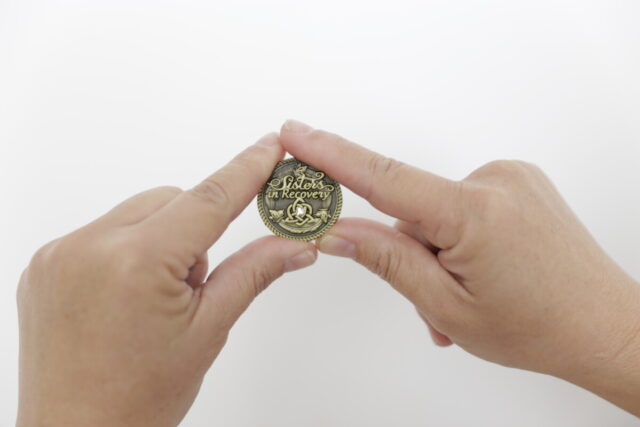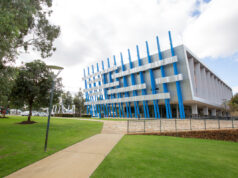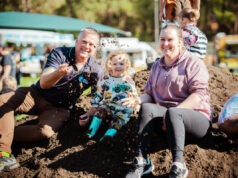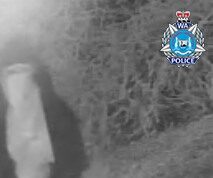
Local women Ruth* and Mary* have had vastly different life trajectories, but they share two very significant truths: they are both alcoholics, and they have both found joy in sobriety.
After decades of drinking to excess, to the point of hallucinating and blacking out, Ruth realised she needed to change her ways when she saw her enlarged liver on an X-ray in 2013.
“I was advised by my doctor to watch my drinking. But I was quite unsuccessful at doing that,” she said.
“Not drinking made me miserable. I quit for four months and my husband was thankful I started again because I was that miserable.”
She admits she reached rock bottom in 2017.
“I had humiliated myself so many times, even when not drinking, that I lost faith in myself and my ability to navigate this world,” she said.
Years of thinking she was “just a failure” led her into a deep pit of self-loathing and she admitted herself to hospital where she was put on suicide watch.
In 2020 she was introduced to Alcoholics Anonymous (AA) through an American spiritual group.
“But stigma, fear and ego prevented me from attending for three years. Furthermore, I liked my wine. I liked the idea of going into a space where people drank alcohol, ate, and enjoyed intoxicating themselves. I thought that by not drinking I wasn’t fun or even interesting. I simply didn’t want to stop, enlarged liver or not,” she said.
Earlier this year she was prompted again to visit an AA meeting. And this time she took a chance.
“I walked into Armadale AA and was greeted so gently and with a depth of kindness. I felt like I was the most important and valued person in the world. I was so humbled I had to blink back the tears,” she said.
“That night everyone seemed to be talking directly to me.
“I discovered that the fellow I had followed from the carpark into AA and sat next to, had learned to read through the program. He donated coins on my behalf, and once again I was humbled. Never had I experienced so much love at once from people I had never before met.
“My recovery began that night and I just wanted – needed – to dive in head first.”
Over the course of the program, Ruth realised her relentless dependency on alcohol, and her inability to stop at one drink were wrapped up in a complex health disorder.
“I finally understood it wasn’t my fault, I simply demonstrated the signs and symptoms of a disease. No-one had put it in those words before,” she said.
Since completing her 12 steps, Ruth says she’s become a new person.
“I went through a personality change. I used to have resistant depression – medication didn’t help. Now I have joy – there’s no grief.
“And it’s like my body has forgotten alcohol too. I went to a tavern the other day for lunch with a friend. I was around others who were drinking and it didn’t bother me one bit.
“And my son’s come out of his room – he’s my mate again.”
Yesterday Ruth proudly received her ‘three months sober’ coin.
According to the Australian Bureau of Statistics, in 2020-21 more than a quarter of Aussie adults (five million people) drank more than the prescribed 10 standard drinks per week, or five or fewer on any single day.
The same statistics show that people employed full time were twice as likely as those who were unemployed to have exceeded the guideline (32 percent compared to 16.8 percent)
And people living in more affluent areas were more likely than those living in areas of most disadvantage to exceed the guideline (30.7 percent compared to 18.5 percent).
People aged 55-64 were more likely to drink regularly and exceed the weekly limit, while young people (18-24) were more likely to binge drink than their grandparents.
A study by the Australian National University showed the pandemic exacerbated problem drinking. While men are shown to be heavier drinkers overall, women between the ages of 33 and 45, with increased caring responsibilities during lockdowns, were disproportionately represented in this statistical spike.
“It’s an equal opportunity destroyer,” Mary said, who hasn’t had a drink since her first AA meeting back in March 1994.
“I’d burnt my life to the ground at the age of 25.
“I was a weekend drinker, so I never believed I could be an alcoholic. I never drank at home – because that’s what alcoholics do.
“But while my peers were all either travelling, or pursuing their careers or having families, here I was in the front bar of a hotel every Friday night.”
She was compelled to go to an AA meeting as a last resort.
“If I didn’t like the meeting or the people there, my ‘Plan B’ was to kill myself,” she said.
Thankfully she found the same kind of fellowship and compassion as Ruth had discovered.
“They welcomed me like a long-lost friend. And I hadn’t been welcomed anywhere in a long, long time,” she said.
“You just fit in; you’re a member when you say you are.”
Since beginning her life again in 1994, Mary has gone from a high school drop-out to a psychologist with a Masters degree and a family of her own.
It’s been almost 30 years and Mary still finds joy in AA meetings.
“The key is in reaching out to help others, in giving rather than getting. I get to witness miracles. I get to see people come back to life, the colour return to their faces,” she said.
There are up to 20,000 members of Alcoholics Anonymous in Australia, who meet at almost 2000 regular local meetings around the country. In 2020, AA celebrated it’s Diamond Jubilee (75th anniversary) in Australia.
AA Armadale meets three times per week, from 7:30pm-9pm Wednesdays and Fridays, and 10:30am-12pm on Saturdays at the Leschen Unit of the Armadale Hospital.
To find your nearest meeting, go to meetings.aa.org.au
*Names changed for anonymity













